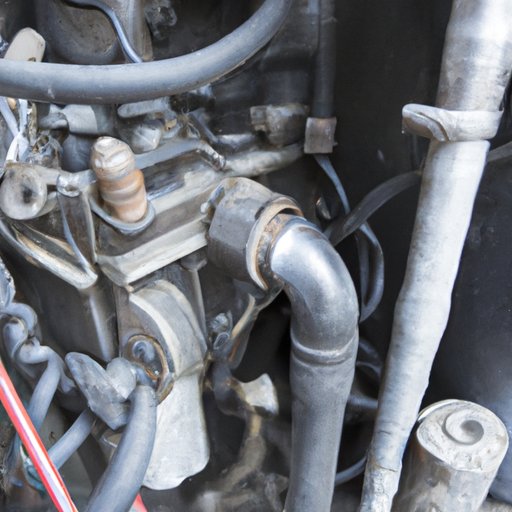Introduction
Fuel pumps are an essential part of any vehicle’s fuel system, as they ensure that the engine receives the necessary amount of fuel for proper functioning. But what exactly is a fuel pump? And how does it work? This article will explore the answers to these questions in detail, providing a comprehensive guide to understanding the anatomy, functionality, and maintenance of fuel pumps.

The Anatomy of a Fuel Pump: Exploring How It Works
A fuel pump is made up of several components, each performing an important function in the overall operation of the pump. These components include the electric motor, impeller, diaphragm, pressure regulator, and outlet check valve. Each component works together to provide the necessary fuel pressure for the engine.
The electric motor is the heart of the fuel pump, as it provides the power to move the fuel through the system. The impeller is connected to the motor, and its blades spin rapidly to draw fuel into the pump. The diaphragm helps regulate the pressure within the pump, while the pressure regulator ensures that the fuel pressure is maintained at the right level. The outlet check valve prevents the fuel from flowing back into the pump when the engine is not running.
These components all work together to create the necessary fuel pressure for the engine. When the electric motor turns on, it causes the impeller to spin, drawing fuel into the pump. The diaphragm then regulates the pressure within the pump, while the pressure regulator maintains the pressure at the correct level. Finally, the outlet check valve prevents fuel from flowing back into the pump when the engine is not running.
A Step-by-Step Guide to Understanding the Functionality of a Fuel Pump
Now that we have explored the components of the fuel pump, let’s take a look at how it functions. To better understand the process, we will break it down into five steps:
- Step 1: The electric motor starts, causing the impeller to spin and draw fuel into the pump.
- Step 2: The fuel is forced through the pressure regulator, where it is regulated to the correct pressure level.
- Step 3: The fuel passes through the outlet check valve and into the fuel lines, where it is delivered to the engine.
- Step 4: The fuel is used by the engine, and any unused fuel is returned to the fuel tank.
- Step 5: The electric motor shuts off, and the process begins again.
As you can see, the process is relatively simple. The fuel pump is responsible for ensuring that the engine receives the necessary fuel pressure for optimal performance.

Common Problems with Fuel Pumps and How to Fix Them
Like any mechanical device, fuel pumps can experience problems over time. Some of the most common issues include faulty wiring, clogged filters, and worn out seals. Fortunately, these issues can usually be fixed with relative ease.
Faulty wiring is often caused by loose or corroded connections, which can cause the fuel pump to fail to start or shut off unexpectedly. To fix this issue, check the wiring for any signs of damage and replace any damaged components. Clogged filters can reduce the flow of fuel, leading to poor fuel economy and reduced engine performance. To fix this issue, replace the filter with a new one.
Worn out seals can also cause fuel leaks, resulting in loss of power and increased emissions. To fix this issue, replace the seals with new ones. If you are unsure about how to do this, consult a professional mechanic for assistance.
Comparing and Contrasting Gasoline and Diesel Fuel Pumps
Although both gasoline and diesel fuel pumps operate in the same basic way, there are some differences between them. For starters, gasoline fuel pumps use spark plugs to ignite the fuel, while diesel fuel pumps use a compression chamber to ignite the fuel. Additionally, gasoline fuel pumps typically have a higher operating pressure than diesel fuel pumps.
Gasoline fuel pumps also tend to have more complex components than diesel fuel pumps. For example, gasoline fuel pumps often have additional components such as fuel injectors, fuel rails, and fuel filters. Diesel fuel pumps, on the other hand, tend to be simpler, with fewer components.
Conclusion
In conclusion, fuel pumps are an essential part of any vehicle’s fuel system. By understanding the anatomy, functionality, and maintenance of fuel pumps, you can ensure that your vehicle runs smoothly and efficiently. Additionally, it is important to understand the differences between gasoline and diesel fuel pumps, as these two types of pumps have different components and operate differently.
By following the steps outlined in this article, you should now have a better understanding of how fuel pumps work. With this knowledge, you can ensure that your vehicle’s fuel system is functioning properly and efficiently.
(Note: Is this article not meeting your expectations? Do you have knowledge or insights to share? Unlock new opportunities and expand your reach by joining our authors team. Click Registration to join us and share your expertise with our readers.)
